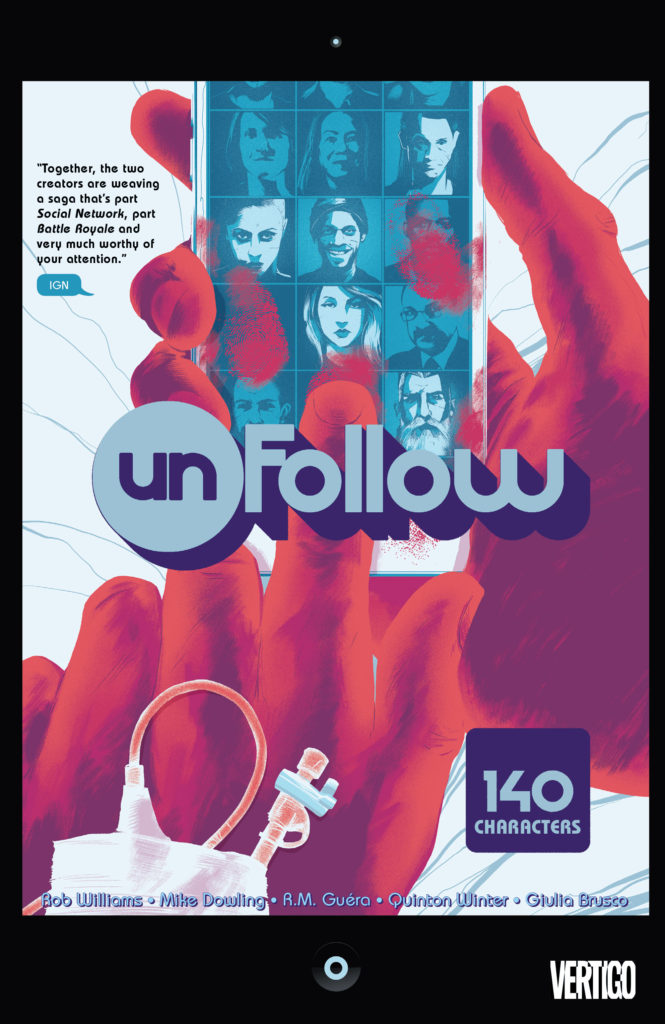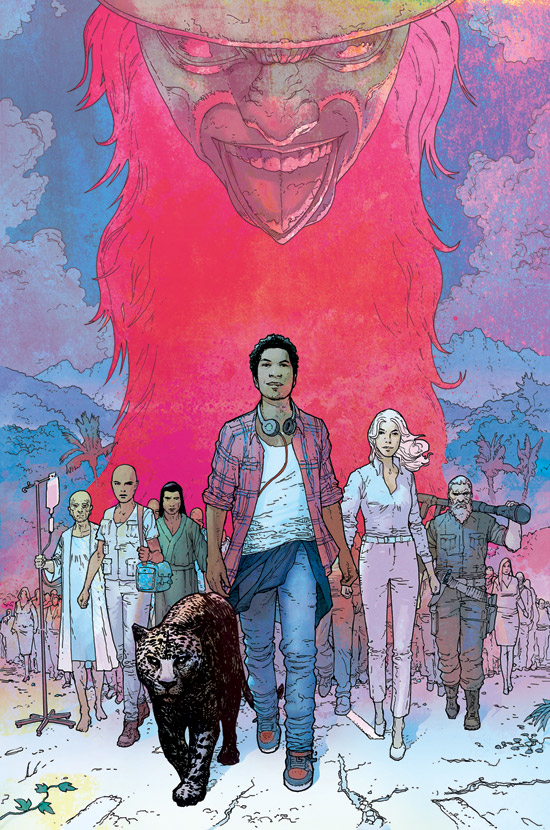No one can ever own or end a concept.
I think about that a lot in my constant state of creator’s decision paralysis, stemming all the way back to when I first starting writing my novel as an eighth-grader and then that summer a comic with almost the exact same concept came out.
I was young then, and I thought, “Oh no! Now they own that concept! They’ve done it so well that no one can do it again. They ended it.”
I’ve thought that many times about a lot of my creative endeavors. People have owned being a boy/girl duet band, blogging about Philly, the theme of my novel again, and many other things. Heck, it’s no so different in the start-up world, where at RJMetrics we saw dozens of other companies with similar concepts get funded and join the fray.
Here’s the thing – concepts are very rarely a zero sum game. There’s room in a single theme for many different variations.
The case and point for me is an actual zero sum game – the “many people enter, one person leaves” theme in fiction. Highlander might be the best example of this for us children of the 80s. There can be only one! Many film fans thought Battle Royale was such an innovative, transgressive take on it that no one else ought to bother. Then, of course, came Hunger Games. Some people called it a Battle Royale rip-off, while others thought it was such an innovative, transgressive take on it that one one else should bother. I loved a comic called Avengers Arena, which many people called a Battle Royale and Hunger Games rip-off, and by that point I knew better than to think it should prevent anyone else from trying the same thing.
 People keep bothering. There is something elemental about concept of a zero sum game where the sum is both power and life. No one owns zero sum games, or superheroes, or zombie apocalypses, and no single work on any of those is so prohibitive a mic drop that no one else ought to make an attempt.
People keep bothering. There is something elemental about concept of a zero sum game where the sum is both power and life. No one owns zero sum games, or superheroes, or zombie apocalypses, and no single work on any of those is so prohibitive a mic drop that no one else ought to make an attempt.
All that matters is that your story is good – that your creation is compelling.
![]()
Unfollow, Vol. 1 – 140 Characters 

Collects Unfollow #1-6 written by Rob Williams and drawn by Mike Dowling with Pahek and R.M. Guerra, with lettering by Clem Robins and color art by Quinton Weaver and Giula Brusco
Tweet-sized Review: Unfollow: a comic for tweeters who’d love a real-world Hunger Games about wealth’s abundance rather than its lack
CK Says: Buy it.
Unfollow, Vol. 1 contains the first six issues of a maddeningly intriguing comic that breathes fresh life into the concept of a zero sum game where there can be only one winner, which we’ve seen used to such great success in Highlander, Battle Royale, and Hunger Games.
Part of its delightful conceit is that there really can be more than one. Larry Ferrell, a Zuckerbergian figure, is facing imminent death and has decided to dispense his $17 billion fortune between 140 people. Their selection isn’t entirely random nor is it perfectly deliberate, and it is extremely public. Some of them are potential future CEOs and world-altering documentarians, while others are bored rich kids and god-fearing one-man militias.
There’s a catch: for every one of them who dies, the remainder of the 140 get to split that person’s inheritance of $120 million. That’s less than an extra million each, so there’s not a lot of incentive for assassination – unless, of course, you plan to slim down the ranks considerably.
That’s not the only catch. We learn that Ferrell’s concept was swiped wholesale from a book from reclusive author Akira, who is also one of the selectees. Ferrell’s administrator Rubenstein is a crazed murderer who seems to have bonded with an intricate tribal mask. And, our regular guy protagonist David keeps hallucinating a leopard in times of stress.
Rob Williams is no stranger to electrifying and slightly-subversive comics. He is one of a class of excellent writers who grew from runs on the venerable British weekly book 2000 AD, but I know him primarily from his streak on Daken, the bi-sexual, villainous son of Wolverine. Instead of playing him as a slutty, one-note, slightly-homophobic joke (as he’d probably be played in many comic books), Williams found a way to keep the character viciously sympathetic. I didn’t even love to hate him – I just loved him.
Despite some dabbling in other Marvel and DC books, he’s mostly stuck to AD and a run on Doctor Who up until this summer, when he’s writing Suicide Squad with a movie due in a matter of weeks as illustrated by comics most-adored penciller, Jim Lee. There’s no gig any bigger than that without the word “Avengers” in the title!
 Here, Williams work is drawn by co-creator Mike Dowling, who also comes from the 2000 AD ranks. Unlike Williams, he has no big-two work on his resume since he started creating comics in 2010 (he’s primarily an illustrator and concept artist).
Here, Williams work is drawn by co-creator Mike Dowling, who also comes from the 2000 AD ranks. Unlike Williams, he has no big-two work on his resume since he started creating comics in 2010 (he’s primarily an illustrator and concept artist).
Dowling’s art is remarkable, and elevates this book to “must-read” territory. It’s like a cross of Leinil Francis Yu and Michael Lark, blending the brilliant liquidity of Yu’s line work with the stark reality of Lark’s worlds. Dowling dips out for two issues of art, but the combination of Pahek and R.M. Guerra maintain the tone in large part thanks to colorists Quinton Weaver and Giula Brusco.
As Ferrell collects his 140 characters onto a private island in Bermuda, naturally some sparks fly. However, the point of Unfollow is not the trapped-on-an-island drama of Battle Royale, but the focus on what happens when they leave, a la the second and third Hunger Games books.
There the focus was centered on Katniss’s PTSD and her symbol as a revolutionary. Here, people are simply trying to get back to their normal lives, even as they live them under a microscope and possibly also with a target on their backs. There’s also an element of Lost‘s latter seasons – not in that they sucked, but in that there are 130 other people who we have yet to meet that are a major part of this story just waiting to pop up.
Is there anything to criticize here? The social media overlay of tweets and follower counts from the characters feels more like a gimmick than a part of the narrative – I don’t know that there is one caption box that was indispensable. While “140 characters” makes for a cute calling card for a book about the fortune of a dot-com benefactor, Williams still needs to push the plot a bit further to show why the choice was so important.
The more subtle issue that gives me more pause is that the named 140 members are each a bit of a stereotype, save for the seemingly more-complex Ravan, the documentarian. Dave being a black kid walking through a gateway of petty crime to protect his genius little sister feels a bit simplistic, especially given his cliffhanger in this volume. Akira is a Asian mysticism trope in the extreme – not that a Japanese character cannot be both deeply wise and ridiculously oblique, but it also feels too easy.
Given the electricity of Unfollow‘s first volume and William’s record – particularly on Daken – I’m prepared to stick around for at least two more collections before I can be a judge of his characters, and I’m certainly not going to miss a single panel of Dowling’s art! We’ve spent so little time with everyone that it’s hard to say if they truly are stereotypes or if that’s just how we’ve chosen to frame them as observers, which is thematically consistent with Ferrell’s legacy being an experiment on humanity.
Plus, I’ve got to know what’s happening with that leopard. A second volume is due in December.